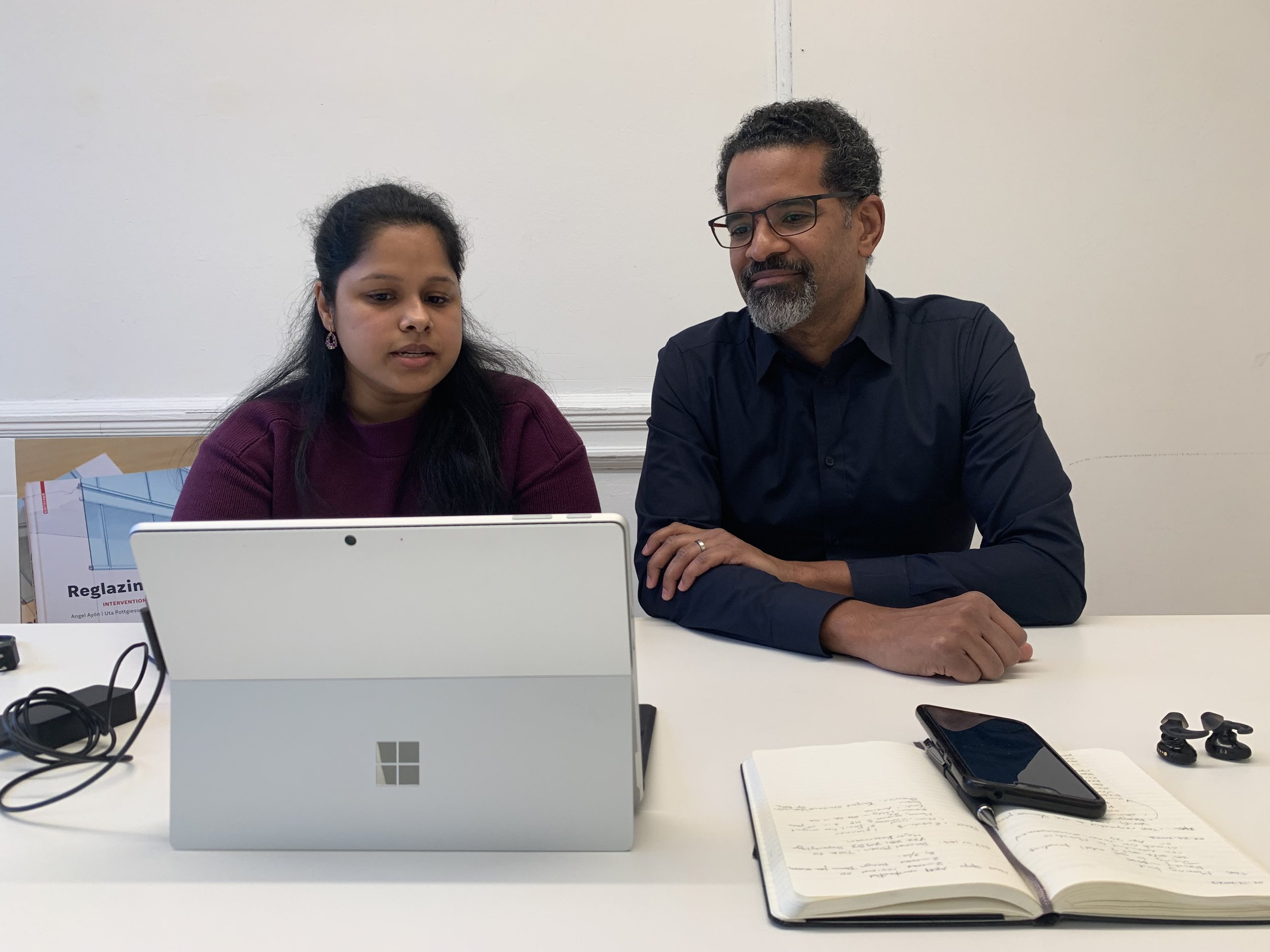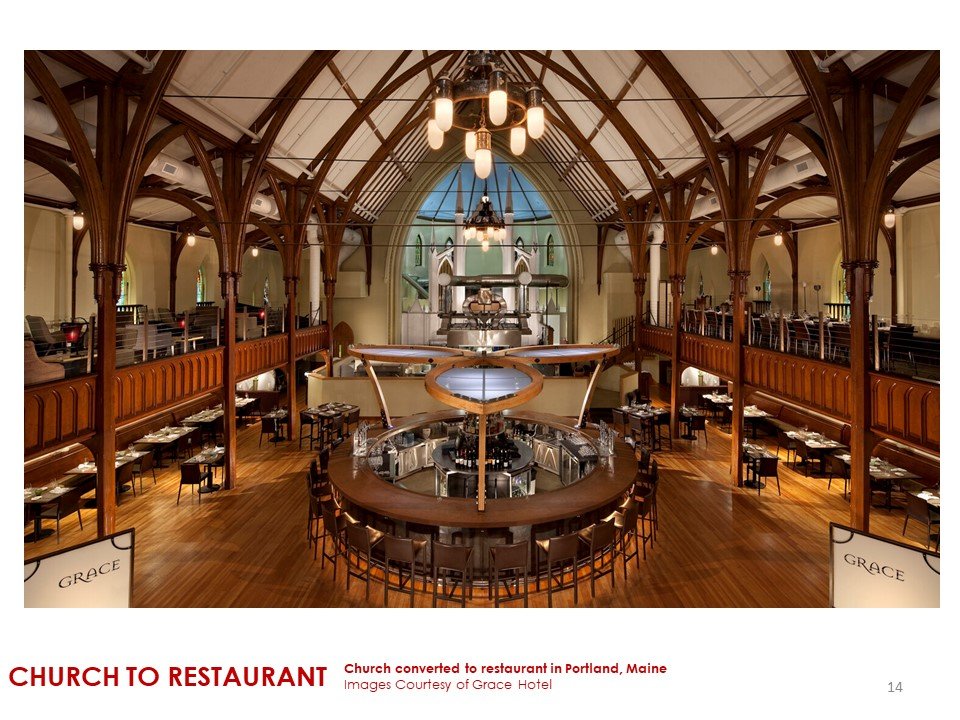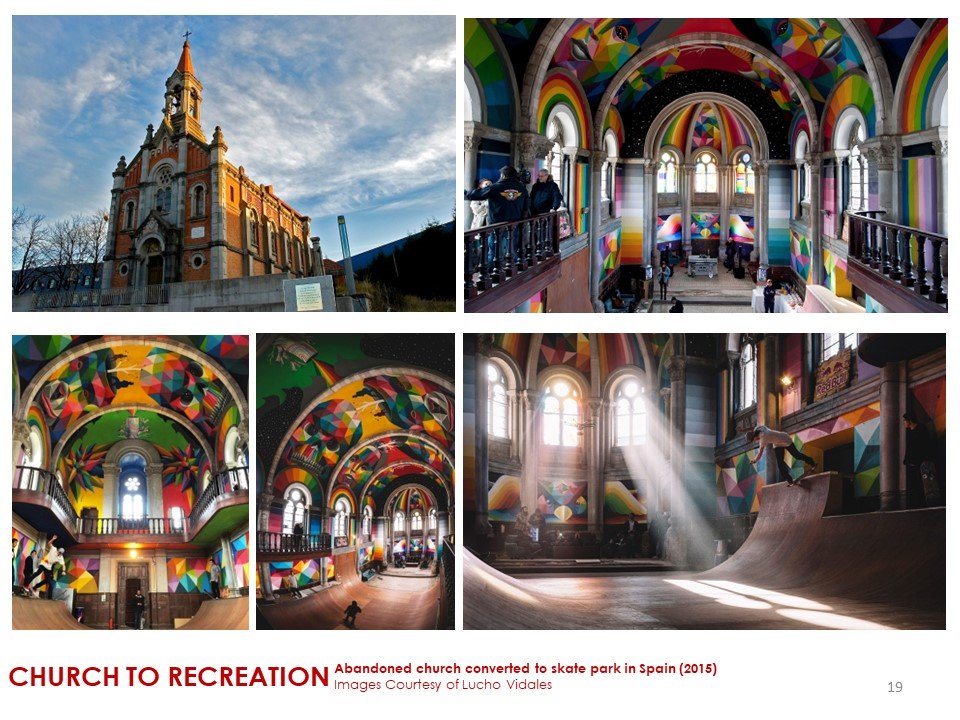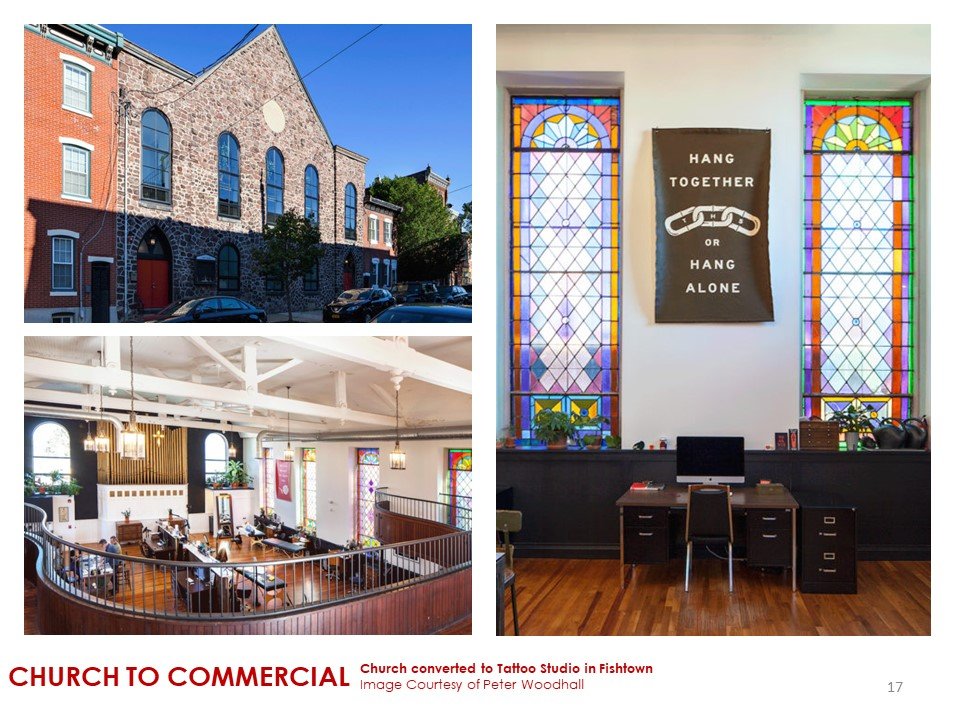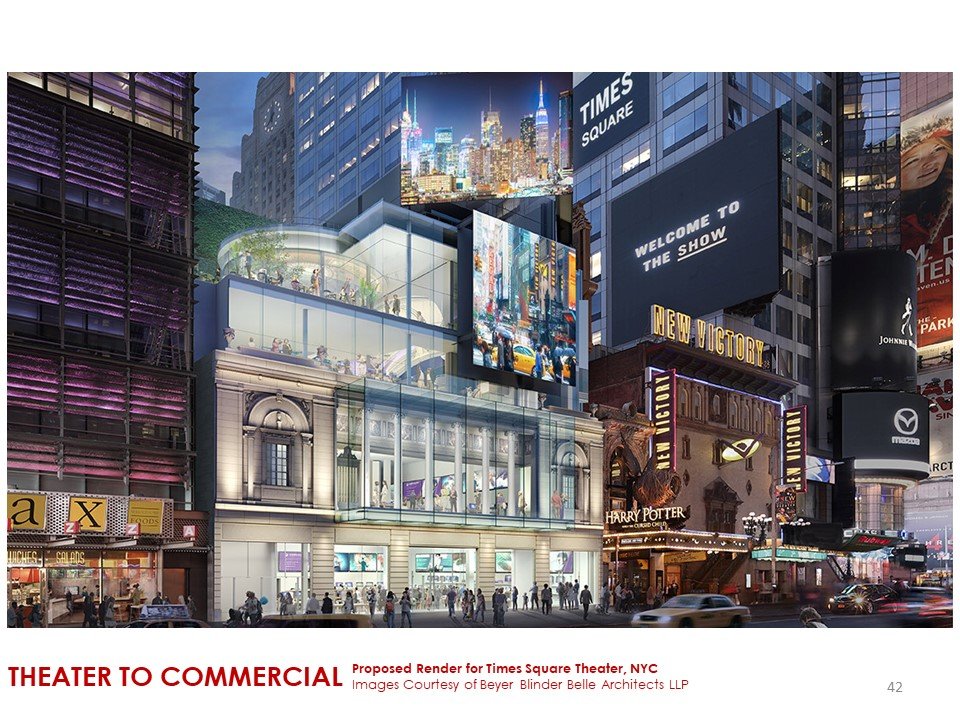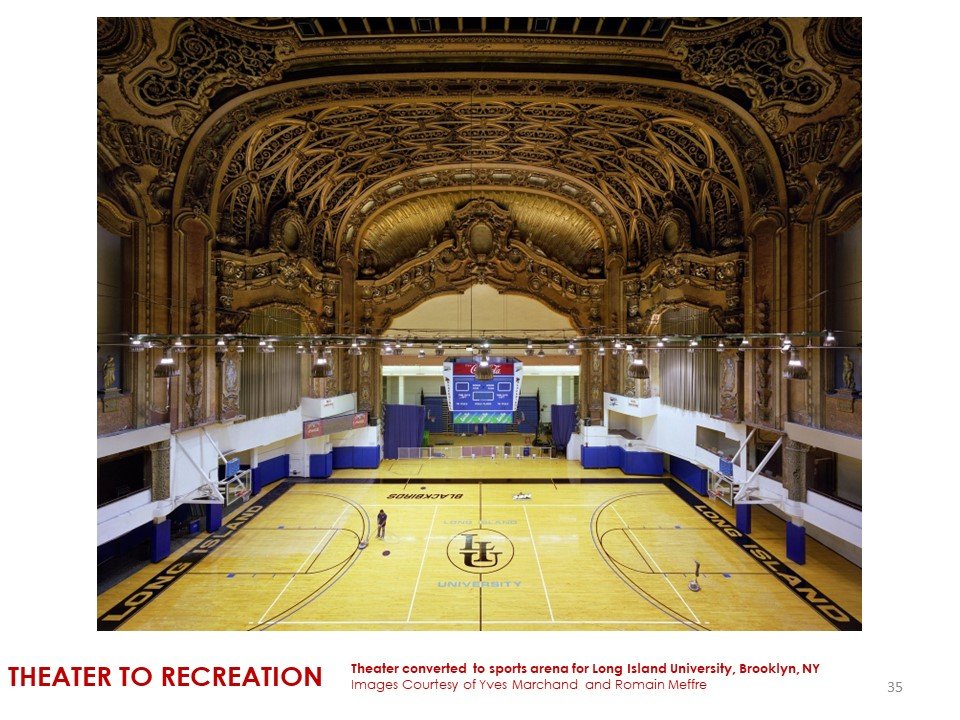What happens to historic churches and theaters when their congregations and audiences dwindle? Unfortunately, many often fall into disuse and disrepair. Rather than tear them down, though, property owners are now turning to adaptive reuse as a way to make them viable for a new generation. To learn more about the exciting new uses these cultural buildings offer, Pratt Institute’s Historic Preservation program tapped AYON Studio to present their project experience and research.
For the second year in a row, Sanika Kulkarni and Angel Ayón shared numerous case studies of cultural building reuse with master’s candidates studying historic preservation, facilities management, planning, and architecture. They showed churches (such as St. Paul’s German Evangelical Lutheran Church and St. Luke’s Episcopal Church) that have been converted into everything from hotels and restaurants to tattoo parlors and skate parks. They also highlighted theaters (like Times Square Theater, Flushing RKO Keith’s, the Nitehawk, and Theater 80) that have been turned into residences, retail stores, gyms and sports arenas, and parking garages.
Not only is adaptive reuse more sustainable, it also helps preserve the unique architectural fabric that makes America’s cities and towns fun places to live in and visit. And although it is challenging, finding ways to creatively adapt these structures for modern uses also provides new opportunities to ever-evolving communities.

